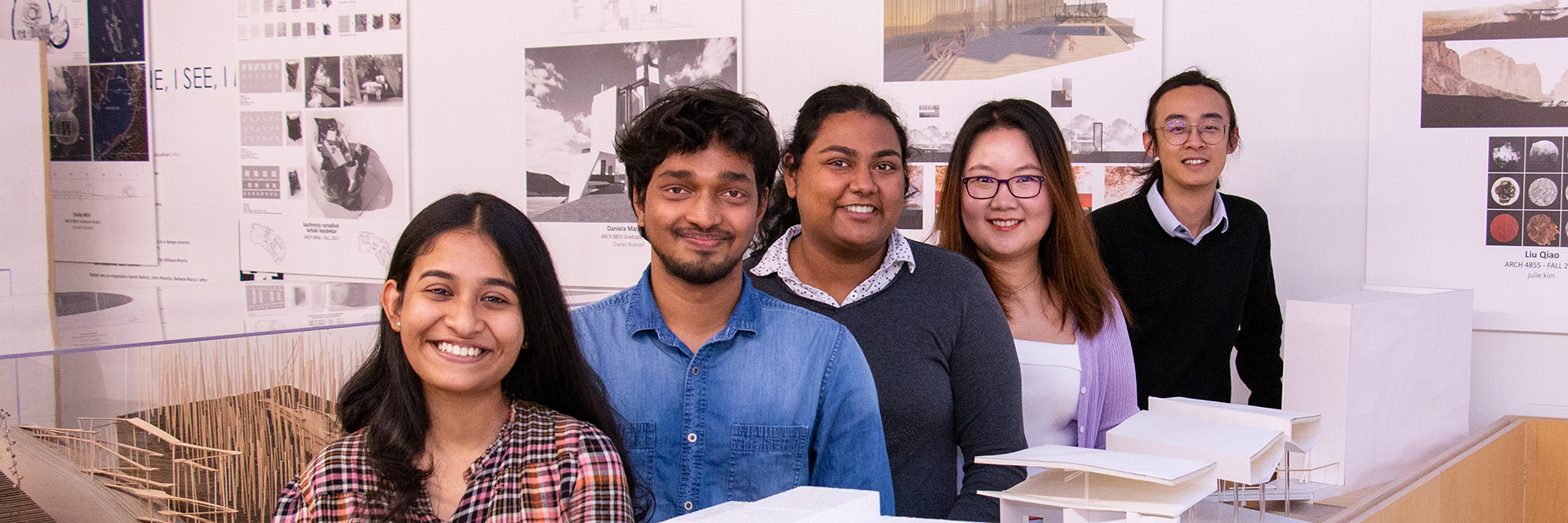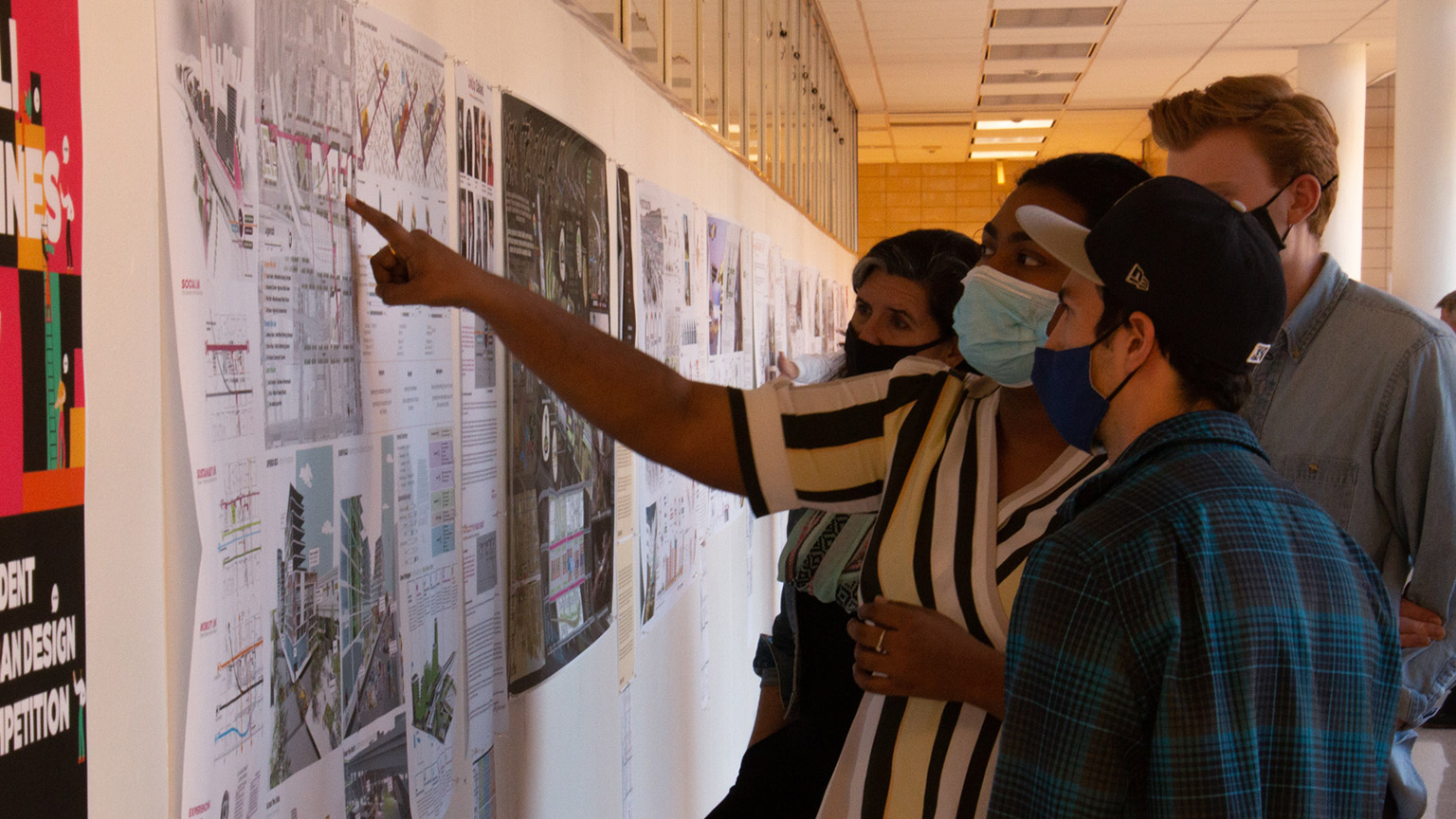
Georgia Tech Team Named 2022 ULI Hines Finalist
Georgia Tech Team Named 2022 ULI Hines Finalist
Wes McRae | February 25, 2022
A team of five Georgia Tech graduate students is one of four finalist teams in the 20th annual ULI Gerald D. Hines Student Urban Design Competition. Finalists in the competition receive $10,000 per team.
For this year’s Hines Competition, 93 teams of five graduate students created a development program for a real, large-scale site in Oakland, California. Each team consists of students from at least three different disciplines.
Finalist team members are Priyanka Adhkari (MSUD); Kishore Kandasamy (M.Arch); Aparna Reghukumar (M.Arch); Bea Wang (MBA); and Yilun Zha (Ph.D.), concentrating in urbanism. Ellen Dunham-Jones and Rick Porter are the team’s academic advisors. Professional advisors for the team are Chirag Date, Modern Mobility Partners; Praveen Raj, Sponge Collaborative, and Geoff Koski, KB Advisory Group.
A second Georgia Tech team, entirely from the College of Design, received an honorable mention as one of the top nine teams. Team members are Dishaddra Poddar (MSUD); Ashlyn Oakes (MCRP); Devaki Kesh (MSUD); Lakshmi Sahithi Datla (MS Arch); and Robert Judice (MRED). John Threadgill and Dunham-Jones are the team’s academic advisors.

According to Dunham-Jones, the students address combinations of problems in the competition. “[Gerald] Hines thought it was really important to get the architects, the planners, the business development folks, etc. together to encourage collaboration and learn from each other to create well-designed places.”
The section of Oakland chosen for the competition, Old Oakland, is bordered on two sides by freeways. The specific plots of land contain a park and several public sector buildings. Teams were challenged to come up with mixed-use, mixed-income plan to revitalize the area.

The finalist team’s concept, Linkup Oakland, reconnects Old Oakland to adjacent neighborhoods and its rich cultural heritage.
“We wanted to look at different ways of linking Old Oakland socially and historically,” Adhikari said.
Zha agreed. “The area’s history spans Native American development, the shipbuilding industry, and Silicon Valley’s influence,” said Zha. “But all those thoughts become disconnected because of racial and social segregation. We wanted to link those thoughts still existing in the site.”
The site posed some challenges, said Reghukumar. “There is clear deterioration. Development has not been centered on this area. We wanted to bring back development but prevent gentrification.”
As part of that approach, Linkup Oakland mixes market-rate and affordable housing, and dedicates a portion of the site to transitory housing outreach centers, a skill development center, and health care for the homeless population.

The team earning an honorable mention conceived Seize the Freeway. The jury said they loved the team's bold, long-term vision for turning the highway into a park.
Dunham-Jones has been advising teams for the last ten years. During that time, six Georgia Tech teams have reached the finals. The winning team will receive $50,000.
The competition gives team members a chance to bring design and finance together, said Dunham-Jones. “They have to be creative to get grants for social improvements. That’s not something we typically are doing in the design classes, and the business classes are not focusing on design.”
Wang found the collaboration valuable. “I did a smaller competition only focused on the business part. This is closer to real life. Designers and architects have a concept of building and community. It becomes a ‘touching-the-ground’ problem, not a high-level business problem.”
Kandasamy expressed similar thoughts from the designer’s perspective. “I considered real estate and financing very rigid: those are just numbers, you can’t do much with them,” he said. “Once you add architecture, you make creative decisions, and creating a plan for finance becomes part of the creation.”
Although this is an ideas competition, teams must include a market-feasible development plan. Their pro forma must address with the plan will cost, what rents will be, and what the 10-year profit will be. The development plan must be presented on graphic boards without a spoken presentation, and only 500-word summaries are allowed.
The presentations for Linkup Oakland, Seize the Freeway, and other eight Georgia Tech teams will be on display in the Cohen Gallery (“the bridge”) on the 2nd floor of Architecture East, March 1-11. There will be a reception and exhibition opening the afternoon of March 2 at approximately 3pm.